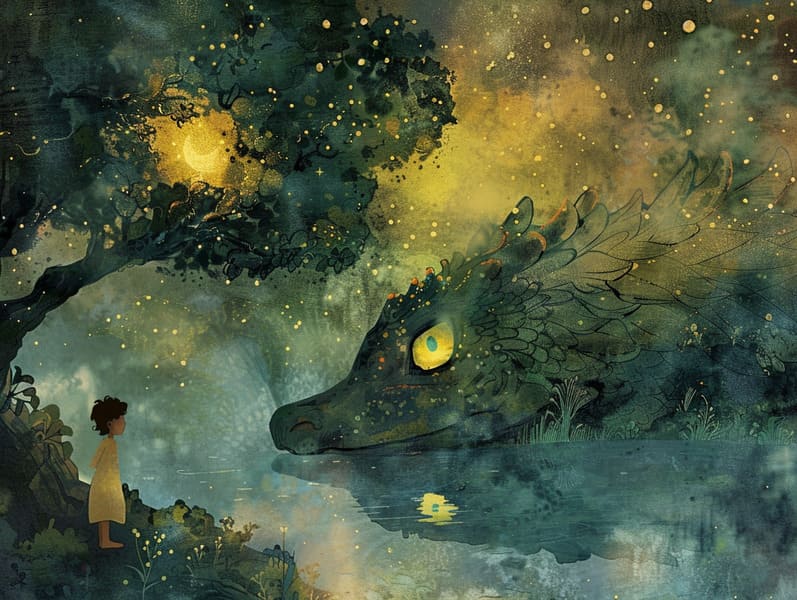The Creation of Old Fairy Tales with Their Lasting Radiance.
The Creation of Old Fairy Tales with Their Lasting Radiance.
Blog Article

Classic fairy tales have enduring presence. These tales have been shared from one generation to the next centuries before they were ever recorded. They sprang from a variety of traditions, including Indigenous traditions. They were initially shared among older generations, often carrying themes and messages mirroring the societal norms and beliefs of the time.
The renowned Brothers Grimm, Jacob and Wilhelm, were among the first to gather many of these beloved stories. Their volume, "Grimm's Fairy Tales," included classics like "The Little Glass Slipper," "Hansel and Grethel," and "Little Snow White," which have since become hallmarks in the world of beloved fairy tales. Similarly, H. C. Andersen's whimsical stories, such as "The Mermaid's Tale," and "The Little Duckling," have enchanted hearts worldwide, ensuring their place in the pantheon of beloved fairy tales.
Despite being ancient, these stories remain as pertinent as ever, especially as kids' bedtime tales. These delightful tales are now available in numerous formats, including vibrantly illustrated books, captivating animations, and web-based fairy tales.
Their lasting appeal can be connected to several magical reasons:
Moral Lessons: Ancient fairy tales often teach important moral lessons. Tales like "The Wolf and the Liar" teach the importance of being truthful, while "The Story of the Tortoise and the Hare" exemplify the qualities of resolve and meekness. These narratives offer kids clear distinctions between truth and falsehood, developing their moral compass in a mild yet deep way.
Compassion and Insight: Timeless fairy tales frequently present individuals facing trials and tribulations, provoking young readers to relate with their struggles and cheer for their triumphs. For instance, "Beauty and the Beast" shows us the importance of seeing beyond looks to know the true nature of a soul, developing awareness and understanding.
Cultural Insights: Many classic fairy tales are imbued with the cultural contexts from which they grew. Reading these narratives can provide intriguing perspectives into different traditions, encouraging a sense of world understanding and respect.
Creativity and Fantasy: The supernatural elements in classic fairy tales—enchanted objects—foster children’s creative dreams. These tales bring readers to fantasy realms, fostering innovative ideas and a sense of mystery that lasts a lifetime.
Traditional fairy tales are not only magical but also enlightening. They work as fantastical tools in promoting various intellectual and emotional capacities in little ones. When traditional fairy tales are voiced, they develop language acquisition by offering new terms and complex sentence structures. This practice also promotes auditory perception and mindfulness, as kids concentrate deeply, anticipating to see what happens next.
Furthermore, discussing the themes and characters of fairy tales can promote thinking skills and evaluative skills. Children are led to find patterns, forecast, and know cause and effect. These talks also encourage young readers speak out their thoughts and feelings, fostering their emotional intelligence.
In today’s high-tech era, the proliferation of digital storybooks has made these fairy tales more acquirable than ever. Web platforms and applications feature broad selections of popular fairy tales that can be explored or listened to anytime, anywhere. Fairy tales recited are particularly popular, offering an engaging way for young ones to take part in these fascinating tales. Narrated books and spoken videos take characters and settings to life, often joined by mesmerizing sound effects and harmonies that elevate the story adventure.
The lasting appeal of old fairy tales lies in their ability to change to current times while preserving their core values. Contemporary updates of these tales often feature more varied figures and modern settings, making them pertinent to today’s audience. However, the core values of valor, understanding, and fair-mindedness remain unchanged, continuing to connect with young listeners of all ages.
Traditional fairy tales also offer a sense of protection and knowability. They share a structured narrative with a plain beginning, middle, and end, often winding up with the solving of conflicts and the triumph of rightness over wrongness. This foreseeability can be placating for children, presenting a sense of sturdiness in an unpredictable world.
Traditional fairy tales continue to mesmerize and train new generations, maintaining their majesty and importance in modern society. As children's bedtime stories, they grant access to a perfect blend of magic and knowledge, promoting moral values, empathy, and creativity. The proliferation of digital fairy tales and the widespread nature of fairy tales read aloud confirm that these timeless tales remain accessible to new generations.
By keeping and circulating these narratives, we continue to acknowledge the rich tapestry of folklore and cultural heritage. Whether you are enjoying a colorful picture book, accessing a cyber library, or playing an narrated book, the mystique of famous fairy tales is always within reach. These narratives emphasize of the perpetual force of stories and its ability to join us across time and space.
Whether you are experiencing a vibrantly illustrated book, delving into a web-based collection, or listening through an read-aloud read more story, the spell of famous fairy tales is always within reach.
These narratives highlight of the continued strength of storytelling and its ability to connect us across generations and cultures, making a tie that enchants and educates alike.